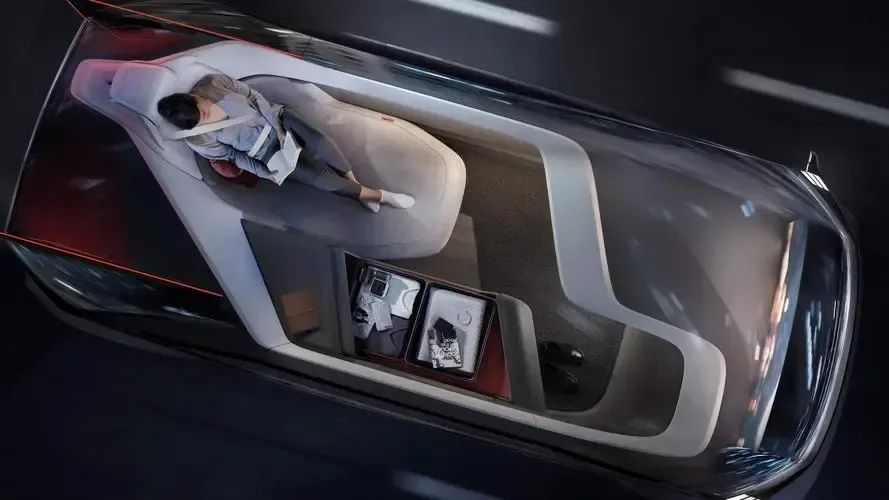With the increasing usage of electronic products such as smartphones and iPads, the related demand for intelligence is gradually shifting to vehicles, among which the development of smart cockpits is a crucial aspect directly related to the driving experience. The smart cockpit primarily meets the differentiated needs of various groups through various intelligent means, reflecting that cars not only provide convenience for travel but also embody characteristics of informatization, humanization, and fashion.


New Concept of Smart Cockpit

When discussing the driver’s cockpit of a car, we must first understand the concept of HMI. HMI, translated into English as Human Machine Interface, is more professionally referred to as the human-machine interaction interface. It serves as a medium for information exchange between the car and the driver or passengers, converting internal car information into a form that can be accepted by humans. Common functions such as switches, large screens, and voice commands are specific manifestations of HMI.
Regarding the composition of the smart cockpit, there are currently only conceptual interpretations, and the final form will vary based on different needs. In short, the smart cockpit mainly consists of three parts: information input, functional carrier, and information output. Information input collects user demands through various forms, such as voice control, touch control, and remote control; the functional carrier is the foundation and core, as everything revolves around it; information output is the information that users ultimately perceive, which can be conveyed through visual, tactile, and auditory means.
LCD Screens Become the New Highlight

Currently, the development of smart cockpits still heavily relies on internet technology, with 3G and 4G networks being the main applications. The new functional demands for smart cockpits mainly focus on five aspects: viewing driving data, using driving assistance, precise navigation, rich entertainment systems, and convenient communication systems. All these functions require a new carrier—LCD screens—to interact with the occupants of the vehicle.
1. Large Screen Display Becomes a Necessity
The main configuration of traditional cockpits includes mechanical instruments + central control screen + in-car audio system. Mechanical instruments only provide basic vehicle information such as speed, engine RPM, and fuel consumption, lacking flexibility and intuitiveness in information content and presentation. Since traditional mechanical instruments cannot embed voice and touch interaction functions, they struggle to meet the intelligent demands of drivers and passengers. The central control screen and most controls of the in-car entertainment system are physical buttons, which offer lower interaction convenience compared to the touch methods commonly used in consumer electronic devices. With the advancement of cockpit product electrification, systems equipped with large screen displays have seen more applications.
2. Multi-Screen LCD Displays Bring New Information and Entertainment Experiences
As people’s living standards and demand levels rise, cars, as the “third space” outside of home and work, are gradually being developed. The traditional in-car entertainment system primarily focuses on audio playback, and the central control screen located in the front row cannot adequately cover the co-driver and rear passengers. These setups can no longer meet the increasingly rich cultural demands of the public and the higher expectations for travel experiences.
3. Large Screen Displays Enhance Driving Safety
In traditional in-car displays, the information is scattered, requiring drivers to significantly shift their gaze to obtain information from different displays, and the presentation of information lacks readability. For example, to view the instrument panel, drivers typically need to lower their heads by 20° to 25° and identify the scale on the dial to read the speed, which greatly reduces driving safety. Intelligent in-car displays can reduce the visual displacement of drivers, enhance information readability, and help drivers quickly obtain information and react, thereby improving driving safety.
New Functional Advantages of Smart Cockpits

In the future, cars will become a more powerful social space than smartphones, integrating multiple services such as travel, entertainment, socializing, and office work into an intelligent mobile space. Under this development trend, the data input, functions, and information output presentation methods of smart cockpits will undergo tremendous changes.
1. Diversified Input Methods
It is particularly noticeable that the traditional button mode is gradually being replaced, and the ways of human-machine interaction are becoming more diverse, with voice, APP remote control, gestures, etc., all capable of controlling the in-car systems. With the development of artificial intelligence, voice systems are increasingly capable of understanding dialects, semantics, and contextual meanings, and voice interaction will cover most control input methods. At the same time, gesture and facial recognition will be introduced into the system for different user groups and usage scenarios. Currently, the reason gestures have not been widely adopted is that their control recognition accuracy is not very high, relying on continuous upgrades and optimizations of the underlying hardware systems to meet higher-level functional demands. Facial recognition has already been applied in many vehicle models for identity verification, enabling contactless vehicle unlocking, and its functions within the vehicle can be even richer, capable of recognizing the emotions and fatigue levels of occupants, as well as the number of passengers, thus providing personalized services for different customer groups.
2. Broader Functional Coverage
In the functions of smart cockpits, safety functions are the most basic. How to help drivers drive efficiently and safely is the main starting point. Next are daily social service functions. Travel and socializing are currently the areas of greatest concern and time investment for people, and transplanting them from mobile devices to cars can transform the vehicle into a mobile comprehensive social platform. Finally, there are work-related service functions. Nowadays, people have increasing demands for real-time work; if sending emails and attending meetings can be accomplished in the car, it will be much more convenient to handle work while on the road.
3. Smoother Information Output
Large screens, multi-screens, and convenience are the trends of development. Currently, central control screens have become standard in many vehicles, but this is still far from enough. The large size of the central control screen has a strong sense of technology, attracting more customers, while adding screens in different locations can make the display of information inside the vehicle more customized, meeting the information acquisition needs of different groups. In addition to the size of the screens, clarity and smoothness are also very important for users, which are factors that need to be considered for future information output.
Technological Content of Smart Cockpits

1. Driver Monitoring System (DMS)
According to relevant data studies, over 60% of traffic accidents are caused by driver inattention or fatigue, and in rear-end collisions, the proportion of traffic accidents caused by these reasons is as high as 94%. For public travel safety considerations, both the EU and China have introduced relevant laws and regulations, with China taking the lead in mandating the installation of DMS in commercial vehicles such as “two passengers and one dangerous goods” models, and requirements for passenger vehicles are also being promoted.
DMS mainly utilizes visual or infrared imaging methods through cameras to detect facial features, eyes, and other facial characteristics, while tracking changes to extract the current driver’s information characteristics, achieving fatigue monitoring, attention detection, and dangerous behavior monitoring. When the system detects the aforementioned issues with the driver, it will warn the driver through flashing lights and alarms; if the driver does not take timely measures, the vehicle will briefly take control measures.
1
Fatigue Monitoring
Fatigue is primarily defined in relation to body temperature, skin resistance, eye movement, breathing rate, and heart rate. During driving, the camera samples the frequency and duration of the driver’s eye closure and yawning, combining driving time and speed to determine whether the driver is in a state of fatigue and to assess the level of fatigue. Based on different levels, DMS will send sound alarms, instrument alerts, steering wheel vibration alerts, tighten seat belts, etc.
2
Attention Detection
Attention detection is mainly achieved by estimating the driver’s head position and gaze direction. During driving, the camera samples the driver’s gaze deviation angle and facial deviation angle, comparing them with pre-set safe angle thresholds for judgment. The judgment of distraction levels starts timing when the threshold boundary is triggered. DMS will provide different prompts to the driver based on different levels.
3
Dangerous Behavior Monitoring
Dangerous behavior monitoring mainly checks whether the driver is smoking, using a phone, eating, etc. Throughout the entire DMS technical principle, the core part is facial detection, and the system program needs to overcome many issues related to facial image distortion during the execution of facial feature extraction, such as inward and outward rotation of the face, cosmetics, beards, eyes, expressions, lighting conditions, and partial occlusion of the face. After extracting facial features, DMS will combine big data analysis of the behavioral habits behind each feature to determine whether the driver exhibits fatigue or distracted driving behavior characteristics as defined by DMS, and issue timely warnings.
2. Head-Up Display (HUD)
The HUD (Head-Up Display) system, commonly known as the head-up display system, was originally used in fighter jets. To enhance pilot safety and reduce the frequency of looking down at the instrument panel during flight, the HUD system projects many important pieces of information onto a transparent glass in front. HUD technology has developed over many years, but it has only recently begun to be widely promoted, primarily due to the rise of domestic brands and the scale effects brought about by a mature industrial chain.
1
Thin-Film Transistor
In the HUD field, considering the maturity and cost of technology, the most mainstream solution is thin-film transistor (TFT-LCD), whose imaging principle is relatively simple, based on basic projection technology. However, it also has corresponding drawbacks, such as a projection imaging distance of about 2m, which does not fully meet the human eye’s far point vision requirement of over 5m; there are also heat dissipation issues, posing certain challenges for use in high-temperature weather.
2
Augmented Reality LCD Display
The future of HUD technology belongs to augmented reality LCD displays (AR-HUD), as the human eye adjusts the curvature of the lens to change the focal length for clear, reduced images. The nearest point the eye can see is the near point, and the farthest point is the far point. Prolonged reading, computer use, or smartphone use can lead to symptoms of fatigue such as dizziness and dry eyes, necessitating looking into the distance to relax the eyes after working for a while. The advantage of AR-HUD is that it can achieve wide-angle image display, with the farthest imaging distance exceeding 5m, allowing drivers to gaze for extended periods without feeling fatigued. Moreover, AR-HUD technology can provide higher brightness and contrast, with more efficient energy utilization and temperature adaptability meeting automotive-grade requirements.
In the next 5-10 years, with the widespread application of intelligent connected technologies, smart cockpits will begin to shift from being driver-oriented to a multifunctional complex serving the entire vehicle cabin, all passengers, and all scenarios. The automotive industry will combine more perfectly with technology, making smart cars a more intimate and comfortable new mobile space for modern people.
Content Source: “Quality and Standardization” magazineImage Source: Internet

More Exciting Content

Scan to Follow